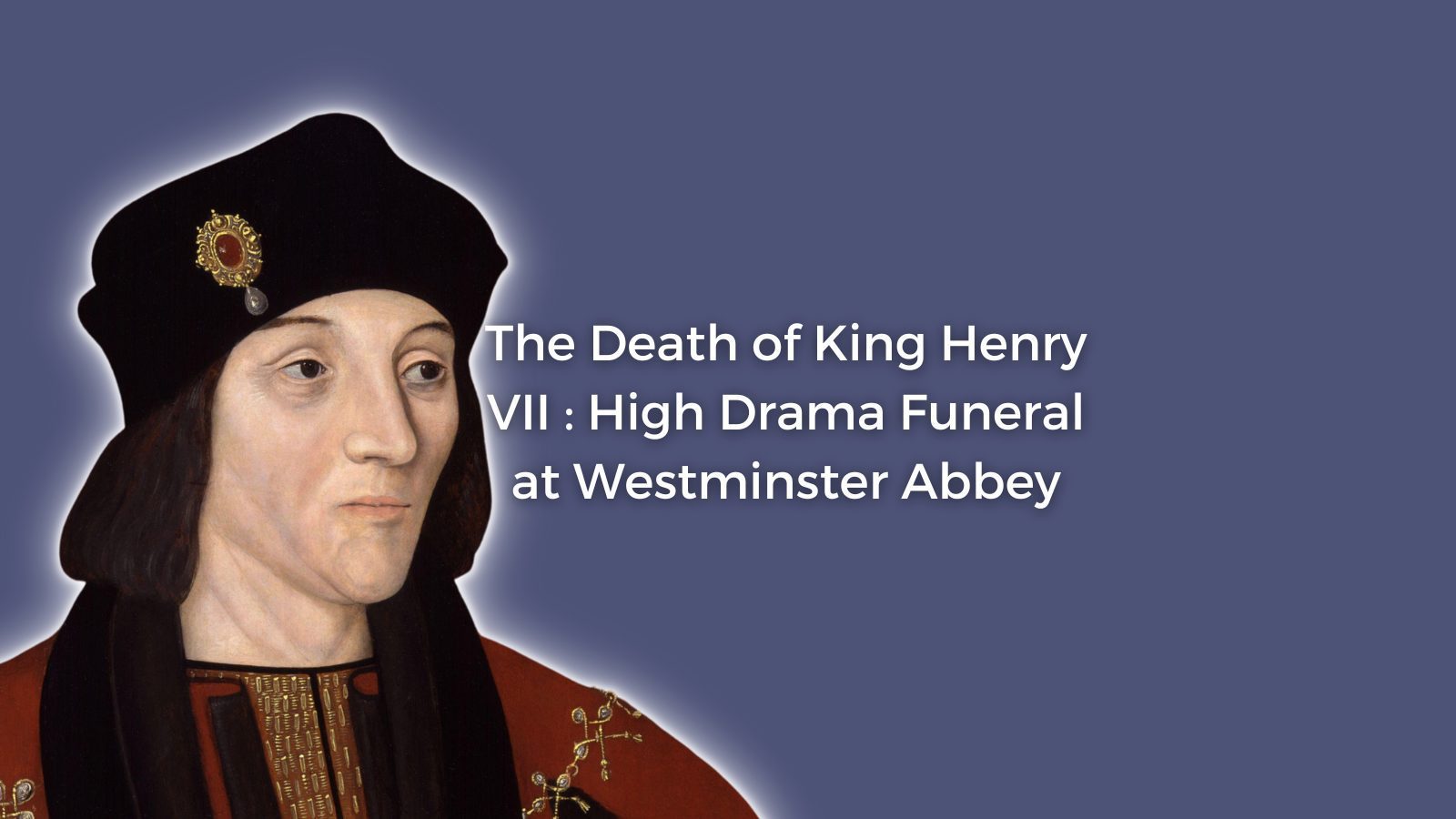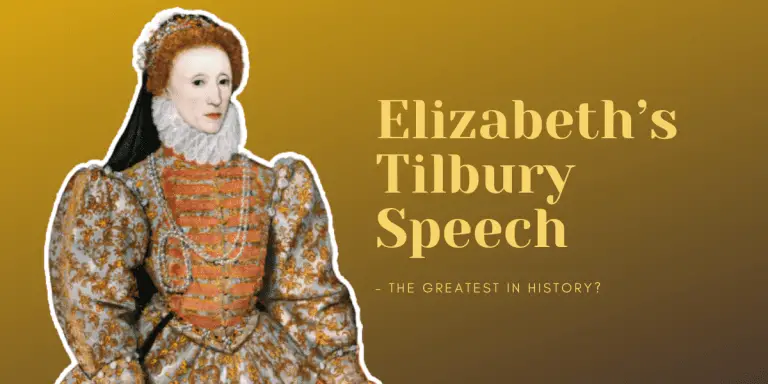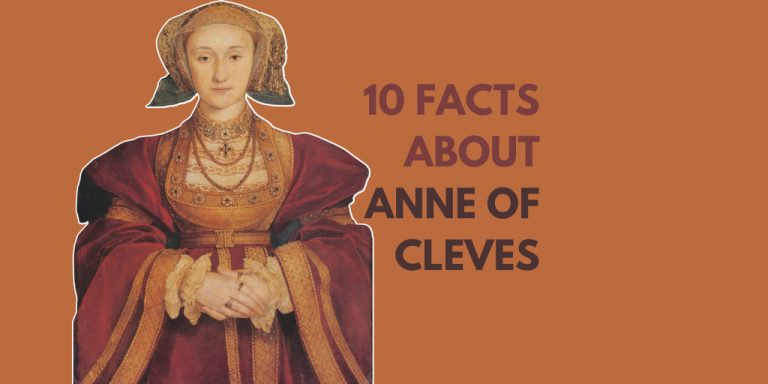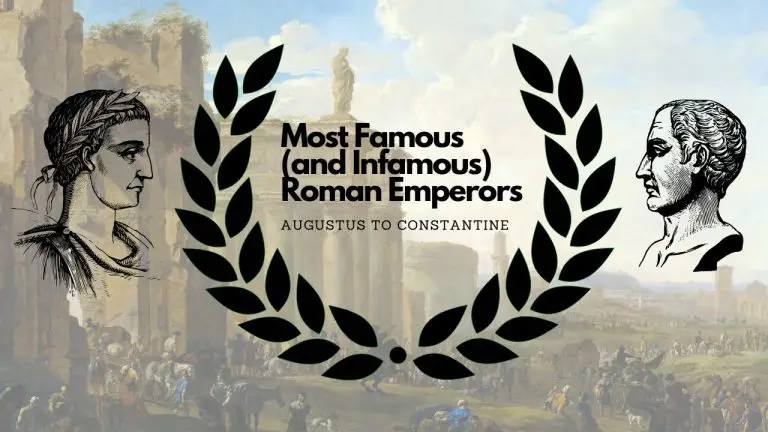The Death of King Henry VII : High Drama Funeral at Westminster Abbey
Henry VII died at Richmond Place on the 21st of April, 1509. He died of Tuberculosis; the crown passed to his last living son, Henry VIII, who was just seventeen years of age.
Much of Henry VII’s later life was spent shoring up his somewhat dubious claim to the throne. The Tudors had become masters of ceremony, symbology, and showmanship. Henry VII’s mother, Margaret Beaufort, was instrumental in this and undoubtedly had a strong hand in her son’s funeral.
Much of the pageantry that was used over 500 years ago for Henry VII’s funeral will be seen in the days after the death of Queen Elizabeth II.
The procession to St Paul’s Cathedral
On the 9th of May, 1509, Henry VII’s funeral procession left Richmond Palace.
The King’s coffin had been lifted onto a wheeled chariot covered in black cloth. The chariot was drawn by seven huge coursers, which were draped with black velvet and decorated with the coat of arms of England on both sides.
On top of Henry VII’s coffin was a life-size effigy. Henry was depicted in his Parliament robes. In his right hand was his sceptre, and in his left hand was his orb. A gold canopy hung over the top like a cloth of estate. Part of this effigy still survives at Westminster Abbey.
One thousand four hundred mourners were part of the procession, which made its way along the south bank of the Thames. At St George’s Fields, it was greeted by the Lord Mayor of London, Peers of the Realm, and the ambassadors of Spain, France, Portugal, Venice, and Florence. This party included Catherine of Aragon, who had purchased a brand-new saddle for the occasion.
Also listed in with the King’s chaplains was a certain Mr. Wolsey – who had not yet come to the attention of the new young King.
They then crossed London Bridge, which must have taken a significant time before arriving at St Paul’s Cathedral.
The Bishop of Rochester, John Fisher, delivered the funeral sermon on the 10th of May. He said, “The king’s prosperity in battle against his enemies was marvellous; his dealing in times of perils and dangers was cold and sober with great hardness.”
It lasted an hour, and afterwards, Fisher’s homily was printed and distributed across the country.
Henry VII’s burial at Westminister Abbey
At 1 pm, Henry VII’s funeral procession left St Paul’s Cathedral and travelled to Westminster Abbey. As it did so, alms were distributed to the poor and, somewhat strangely, to prisoners.
On the 11th May 1509 at 6 AM, the burial took place in the Lady Chapel he had commissioned and constructed as his final resting place.
Three masses were sung, the last being led by the Archbishop of Canterbury, and then the moment of high drama occurred.
Sir Edward Howard, son of the Earl of Surrey, entered the abbey.
He was riding the dead King’s warhorse and dressed in the King’s armour holding his shield and poleaxe. He slowly walked the horse up the nave to the altar. He dismounted and was ceremonially stripped of the armour and weapons by the Duke of Buckingham and the Earl of Northumberland.
The coffin of Henry VII was then gently lowered into the vault that already held the remains of his wife, Elizabeth of York.
The Archbishop then threw a symbolic hand of soil into the grave, and finally, each of the officers of the King’s household broke their staves of offices and cast them in the vault.
The Garter King of Arms then declared in Latin, “The Noble King Henry VII is dead”, and then paused before continuing, “God send the noble King Henry VIII long life.”
This was in much the same way as the Garter King of Arms announced the death of Queen Elizabeth II and proclaimed Charles III as the new King after the accession council at St James Palace on 10th September 2022.
The new seventeen-year-old King Henry VIII was not attending his father’s funeral.
Henry VII and Elizabeth of York were the first King and Queen to be buried in the abbey under the floor as opposed to a tomb above ground. They were also the first burials in the Lady Chapel.
They are now joined by their grandchildren, Edward VI, Mary I, and Elizabeth I. As well as James I, Charles II, Queen Anne, The Princes in the Tower, George II, Mary II, William III, Mary Queen of Scots, Catherine of Valois, Caroline of Ansbach and Margaret Beaufort
The Tomb of Henry VII and Elizabeth of York was designed by Pietro Torrigiano, and the inscription reads
Henry VII rests within this tomb, he who was the splendour of kings and light of the world, a wise and watchful monarch, a courteous lover of virtue, outstanding in beauty, vigorous and mighty; who brought peace to his kingdom, who waged very many wars, who always returned victorious from the enemy, who wedded both his daughters to kings, who was united to kings, indeed to all, by treaty, who built this holy temple, and erected this tomb for himself, his wife, and his children. He completed more than fifty three years, and bore the royal sceptre for twenty four. The fifteenth hundredth year of the Lord had passed, and the ninth after that was running its course, when dawned the black day, the twenty first dawn of April was shining, when this so great monarch ended his last day. No earlier ages gave thee so great a king, O England; hardly will ages to come give thee his like.







